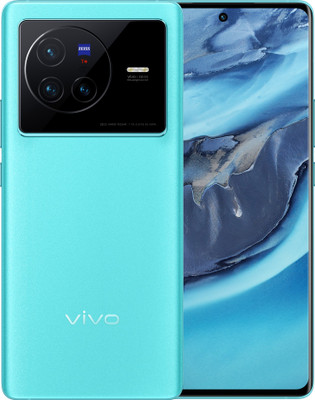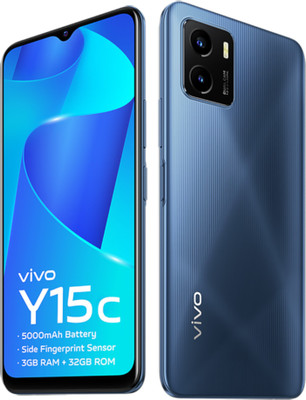Samsung 970 EVO Plus Series – 2TB PCIe NVMe – M.2 Internal SSD

Samsung 970 EVO Plus Series – 2TB PCIe NVMe – M.2 Internal SSD Prices
Price History
Description
Additional information
Specification: Samsung 970 EVO Plus Series – 2TB PCIe NVMe – M.2 Internal SSD
|






 Amazon.in
Amazon.in







Madhusudhan –
I get it on 5004 in prime day sale which is tremendous deal, it is also better than Samsung 980 ssd for having dram, qlc caching , 600tbw etc . I put it on my asus fx506hcb gaming laptop, at first i made my thoughts to buy a gen 4 ssd but believe I cancelled that in last moment and go for this and this is because of gen 4 ssds heat a lot and laptops don’t have cooling for that.
soham –
Super fine and faster like butter, my PC boot in 8 sec. with this SSD…
Awesome…go for it definitely i personally recommended…
Akash Sahu –
First off just to put it out there the drive is amazing and as described.
Only thing that really irked me about this drive is that there are no screws and MOBO/Case manufacturers don’t supply them for you either, I’ve kept all my screws for years of building different PC’s for myself and others and none of my screws fit. Seeing the price of this drive… you would think they could add one screw for mounting NVME’s in the box but they don’t. (Thanks Samsung)
I recommend getting a $8CAD pack of NVME M.2 screws along with the purchase of the drive, will save you a lot of hassle, if you think you have screws for it then you probably don’t unless you’ve pulled them from a previously installed NVME drive. Still shouldn’t be necessary for what we’re paying for these…. but unfortunately it is..
Mannu –
Se calienta mucho y se bloquea no es muy funcional, me gustaría regresarla
Akash Sahu –
I upgraded my boot drive from Samsung 860 Evo 250GB to this. Samsung OS Migration application wasn’t working for me for unknown reasons. So I did a clean installation of Windows 11 using a bootable USB. I didn’t even have to fiddle with the BIOS settings or install any drivers.
Ankur Dwivedi –
I installed the Samsung 970 EVO plus in my Asus BR 1100 replacing the 128 GB SSD. Though it gives ample storage space, the speed is not so great, probably because of my Laptop’s RAM and Processor. But, it is worth buying for this cost, because even 526 GB versions of some other brands are being sold at a higher cost. So, if you have good PC with good RAM and processor, go for it, blindly.
F.A. Bora –
Using this m.2 ssd without a heatsink is not recommended. I am using it without a heatsink and idle temps are very high specially in summer.
soham –
This is the best gen 3 ssd you can get and its really cheap rn as well under 6k. It has DRAM, is based on TLC(dont go for any cheap crucial ssd they are bad) & its TBW is 600TB for 1TB ssd which is standard. Also gave the promised speed. All other ssds in this price are missing either dram or are QLC.
Madhusudhan –
Good replacement for my old setup (16GB intel optane storage + 1TB HDD).
Ankur Dwivedi –
Samsung’s 970 Evo Plus M.2 NVMe SSDs are close to legendary performers at the sharp end of M.2 NVMe SSD performance charts. I was waiting for a long time to experience the performance of these drives first hand. The opportunity came when I purchased a new Dell G3 3500 (2020) Gaming Laptop with the following specs: i7-10750H, 1660Ti 6GB graphics, 16 GB RAM, 512 GB NVMe SSD, 15.6 inch 120Hz screen. The laptop by default has pretty decent specifications. But, when I was pushing through my workload, I could see it struggling.
The RAM was the first to get upgraded to 32 GB (Hyper X running at 2933 MHz @ 17-19-19). This gave a good jump in performance. However, the slower M.2 NVMe SSD (DRAM-less Kioxia) was creating a bottleneck which was becoming quite obvious. Additionally, I was getting tired of hauling a portable SSD drive connected to my laptop that had all my files and data on it. When I saw an special offer on Amazon for the 970 Evo Plus 1 TB, I had to get 2 of them.
Before installing the drives, I switched from the RAID to AHCI SATA mode on my laptop. [There are various resources online showing how to do this safely]. I installed the Samsung Magician software and Samsung NVMe drivers.
The drives are easy to install. In my case, I had to remove the original SSD and install the 970 EVO Plus in its place.
I used a cloning software (not the one Samsung provides) to clone my System drive to one of the 970. Then I booted up the system from the 970 after removing the old SSD. The boot time reduced from about 7-10 seconds (from the Dell logo to Windows login screen) to about 3-5 seconds. This was just a taster of things to come.
These drives are outrageously quick. Data transfers, load times of software and games, everything happens blazing fast. Seeing the performance numbers and charts is one thing, experiencing the fast performance first hand is another.
And then the drives rode away to glory……. Well, not quite. On just the third day after installing, one of the drives died. It wouldn’t allow my laptop to boot. It was painful to see it happen and I was looking at a big loss. Fortunately, I was able to return the drive and buy a new one for the same special price on the same day. That was just pure luck!
Now when the new drive arrived, I noticed something peculiar. Both drives which I had received the first time were made in Korea. But the drive I got the second time was made in China. I was in two minds – should I use it or return it? Checking the information on the box and verifying the serial number on Samsung’s website revealed that the product was indeed genuine. That was half a relief. Now I wanted to know if the drives performed the same or different.
This is what I have found by using the drives over a month. Both drives read and write performance is nearly identical (within margin of error). The “Normal” working temperature of the made in Korea drive is between 45 – 50 degree C; whereas the “Normal” working temperature of the made in China drive is between 38 – 42 C.
The other thing I noticed was that both drives hit the peak temperature mark during benchmark tests around the same time and the peak temperature was also the same – 85 degree C. But for some reason, the made in China drive came back quicker to a “Normal” temperature than the made in Korea drive.
Strange! It may also be that the made in Korea drive gets written to more often as it is my System Drive. But it’s not a convincing enough reason for me.
In short, the important thing is to make sure that the drive is genuine (by checking on Samsung’s website) than where it is made. Samsung does a stellar job on Quality Control in my opinion.
Update after more than 1 month of usage:
The drives were running longer in the higher range of “Normal” to “High” during normal usage. Even though my daily work does not involve heavy write activity to the drives, working on a remote server was causing a lot of writes to the drives. I decided to install copper heatsinks on the drives to try and keep the temperatures in the “Normal” range.
The results after installing the heatsink were astounding. (See photo). After this experience, I would recommend using a heatsink with these drives for anyone who intends to make full use of the capabilities of this drive.
Samsung chose to base it’s newer 980 Pro drives on the 970 Evo Plus than the 970 Pro. This should be proof enough for everyone about the potential of the 970 Evo Plus. Legend!